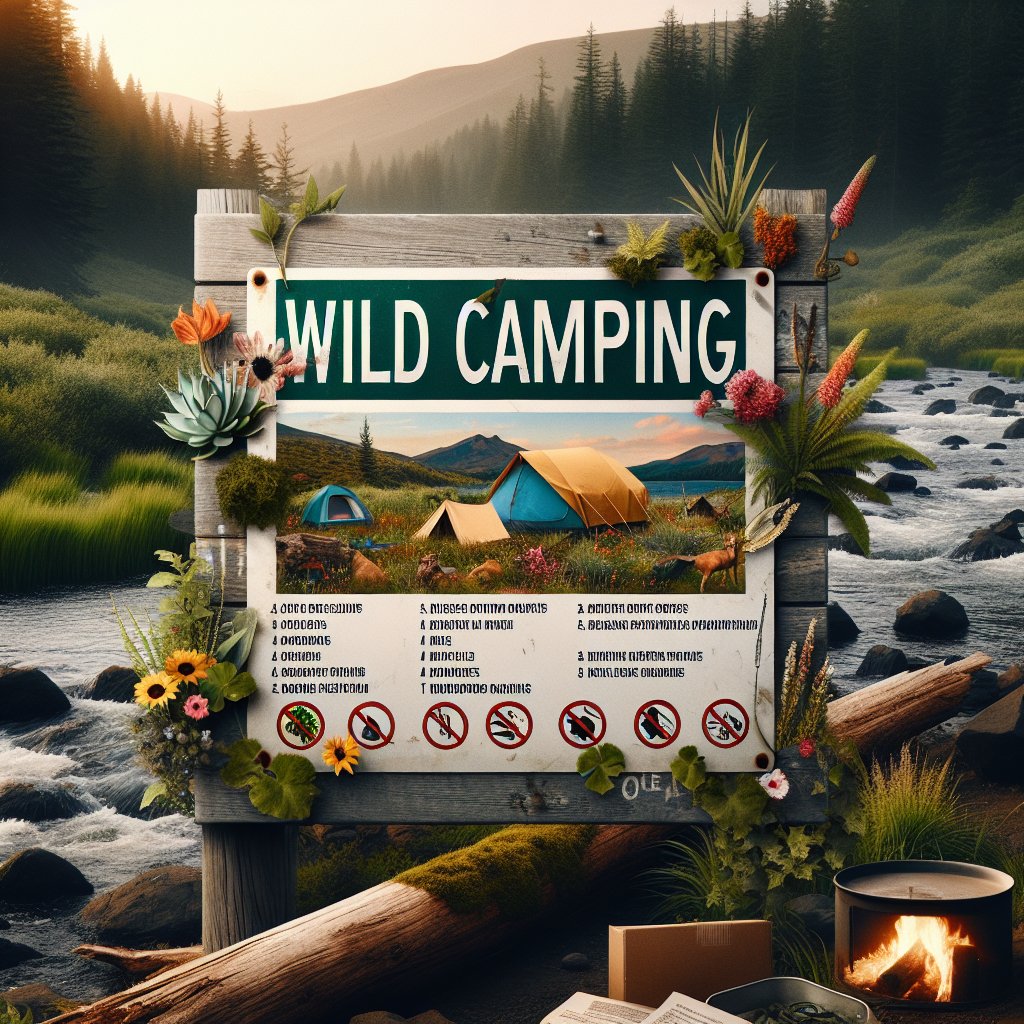Know the Rules: Embrace Responsible Wild Camping in Oregon
When setting out for a wild camping adventure in Oregon, it’s crucial to remember: “Take only pictures, leave only footprints.” This old adage illustrates the importance of treating our beautiful state with respect.
Respect Land Designations
Consideration for land designations is the cornerstone of responsible camping. Camping on Oregon’s public lands is generally acceptable, but there are certain areas where it’s either restricted or not allowed, such as National Parks or protected tribal lands. Use websites like the Bureau of Land Management or the U.S. Forest Service to confirm if camping is permitted in the area you plan to explore.
Aptly Named Dispersed Camping
Perhaps the most popular and authentic way to experience Oregon’s wild countryside is dispersed camping. Dispersed camping means setting up camp outside of designated campgrounds, like those found in Deschutes National Forest or around Crater Lake. Folks often choose spots off the beaten track, like the lesser-known Saddle Mountain State Park or the secluded forest areas near Hells Canyon.
But remember, even in these remote locations, the rule of staying 200 feet away from lakes and streams still applies. This rule is key to keeping our water sources clean – a small consideration that can make a big difference.
Fires: A Word of Caution

Nothing screams camping like a roaring fire under the star-studded Oregon sky. But it’s crucial to remember that we’re custodians of these wild areas. Seasonal considerations come into play here. The locals know that during Oregon’s dry summer months, forest fires are an all-too-real threat. So it’s usually better to rely on a small camping stove.
However, if conditions do allow for a fire, ensure it’s well controlled and always extinguished properly before leaving your campsite or heading to bed.
Preparing for Oregon’s Unpredictable Weather
Knowing the roam-to-weather rule isn’t something you’ll find in your average guidebook. Yet, it’s a tip every local would swear by. In coastal areas like Cannon Beach or Neptune State Park, the weather can take an unexpected turn, especially in the afternoons. Pack layers and quality rain gear for all those surprising Oregon moments.
Embrace the Leave No Trace Principle
Oregonians are proud of their stunning landscape, which is why many subscribe to the Leave No Trace principle. It’s more than just stashing your trash; it’s about respecting the flora and fauna, keeping noise levels down, and leaving the place as untouched as possible.
So pack hack: use reusable containers and avoid single-use plastics. This technique significantly reduces waste while camping. It’s a little foresight that can help preserve Oregon’s beauty for generations to come.
Wildlife Encounters: A Local’s Insight
Oregon’s wilderness is home to an array of wildlife, from the Coastal Range’s Roosevelt elk to the mule deer of the Ochoco Mountains. One significant piece of local advice is to store food in bear-resistant containers or hang it from a tree if you’re camping in bear country, like the areas near Mount Hood or Rogue River.
And remember, while it might be tempting to feed those cute critters, wildlife should remain wild. Feeding them can create dependency and lead to increased human-animal conflicts.
Best Times to Go Wild Camping
Oregon can be a camper’s year-round playground if you know what to expect in each season. The summer’s warm weather makes it the perfect time for camping in higher elevations like Mount Ashland or along the Pacific Crest Trail.
Autumn, with its chillier climate, lesser crowds, and vibrant colors, is perfect for forest camping in areas like Umpqua National Forest or Silver Falls State Park. However, remember that hunting season is in full swing during autumn, so sporting bright-colored gear is recommended.
And if you’re up for a true Oregonian adventure, there’s no better way to witness the silent, serene beauty of winter than camping in lower-lying areas like Willamette Valley.
Wrapping Up
Enjoy the rhythms of nature, the whispering pines, and the rare luxury of solitude in Oregon. Wild camping gives us the chance to reconnect with the environment and appreciate the simple things in life that we often take for granted.
An old Oregon local’s saying goes, “Every sunset enjoyed, every trail conquered, and every moment savored under the Cascadian sky – these are the memories that define our state.” So here’s to making lasting memories, forging intimate connections with nature, and offering profound respect to Oregon’s diverse and awe-inspiring wilderness. Happy camping!
